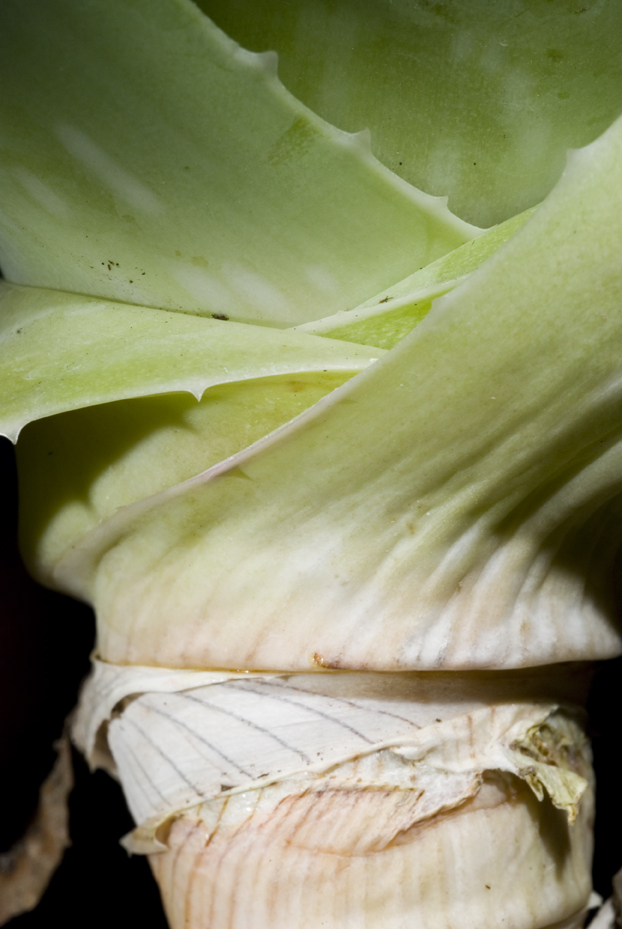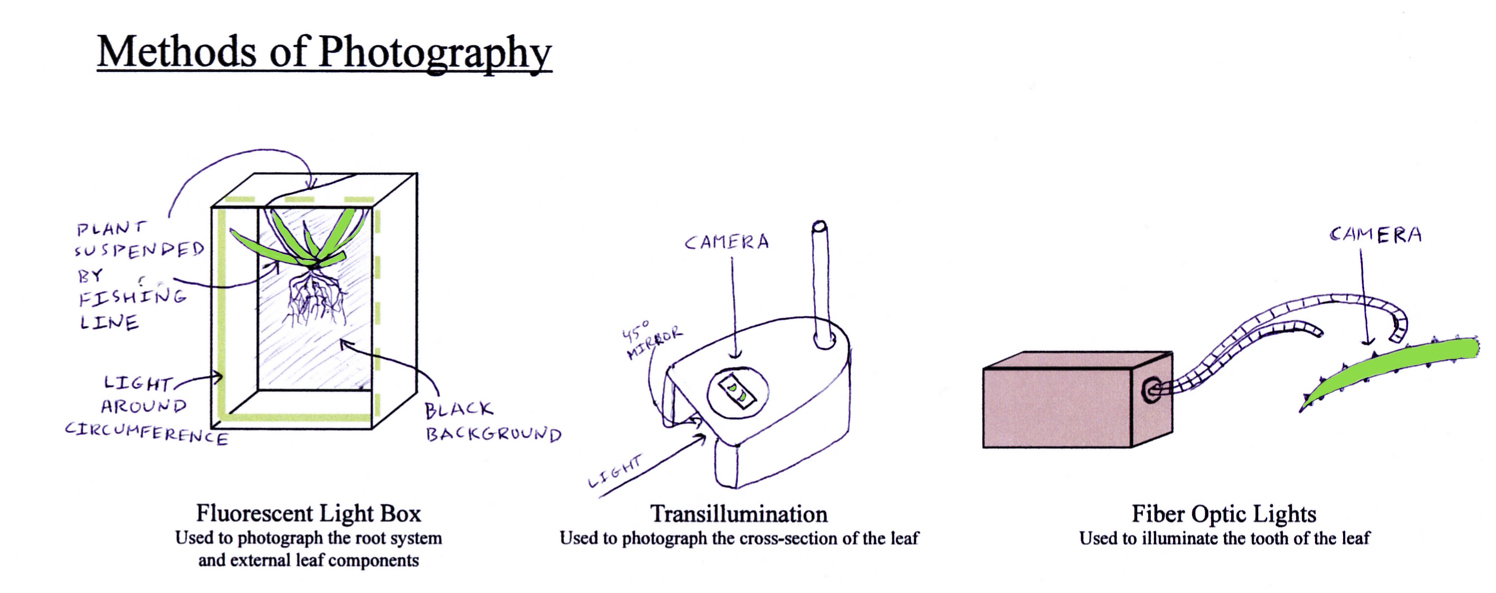Tooth of a Leaf
This photograph reveals in detail one of the teeth found along the leaf. Its taper makes it somewhat translucent.
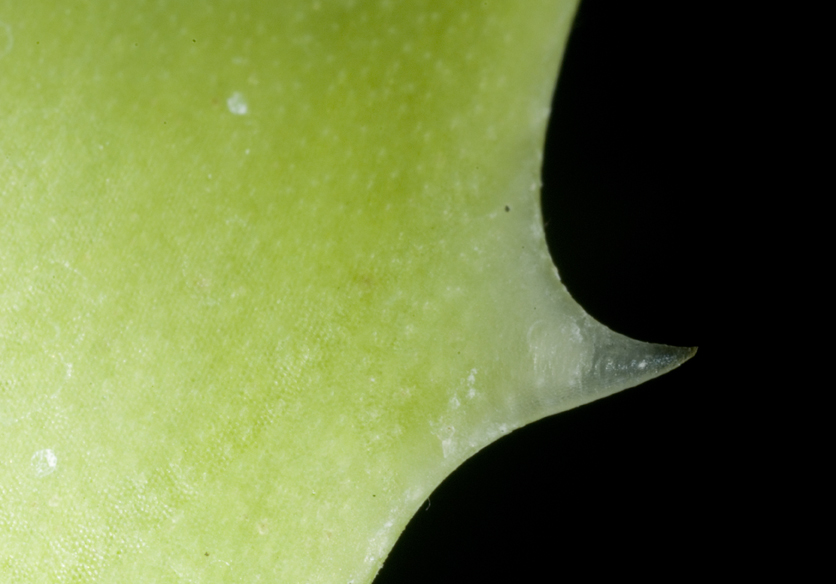
Transillumination of a Cross-Section of an A. vera Leaf
The vacuoles found inside the leaf can be seen clearly here. The thick skin of the Aloe leaf that gives it its rigidity can also be seen in the green area of the cross-section.
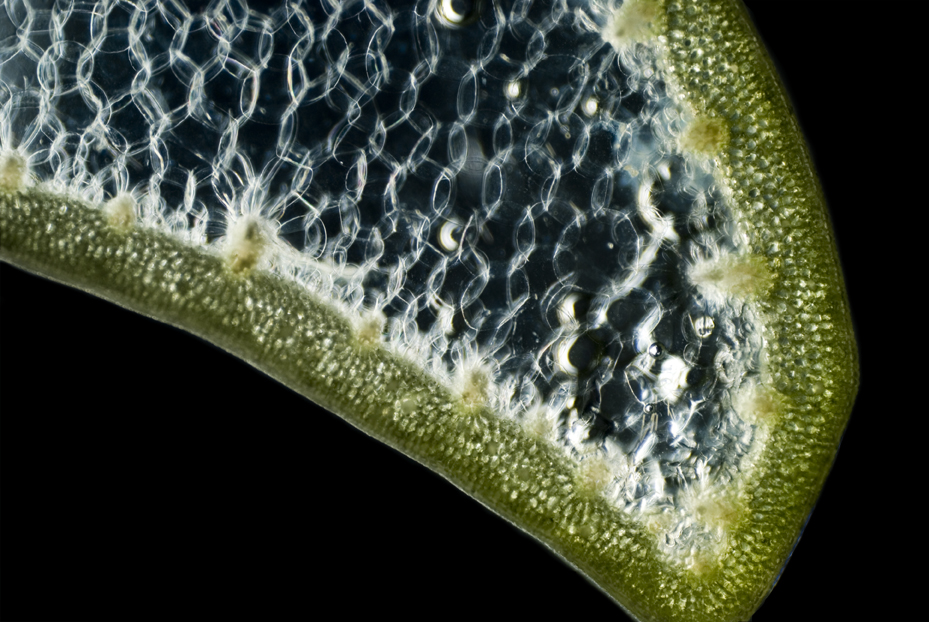
Elastic Sacs Inside an A. vera Leaf
The vacuoles inside the leaf contain the Aloe vera gel. Their elastic quality allows the leaves to flex but not break.
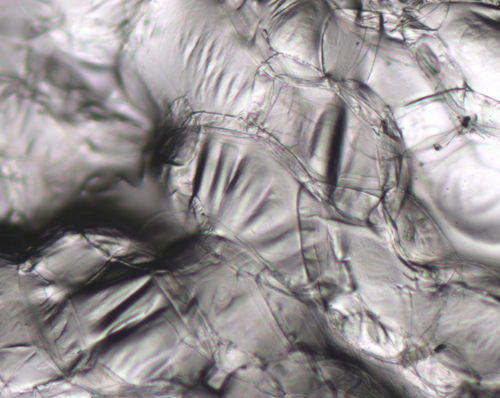
Root System
The root system of the Aloe plant. The primary, larger roots are more spread out horizontally; this allows the plant to reach further around the topsoil to collect what minimal water falls in the regions in which the plant typically exists.
Note also the spots on the undersides of the leaves. This denotes this Aloe vera as the variation chinensis.
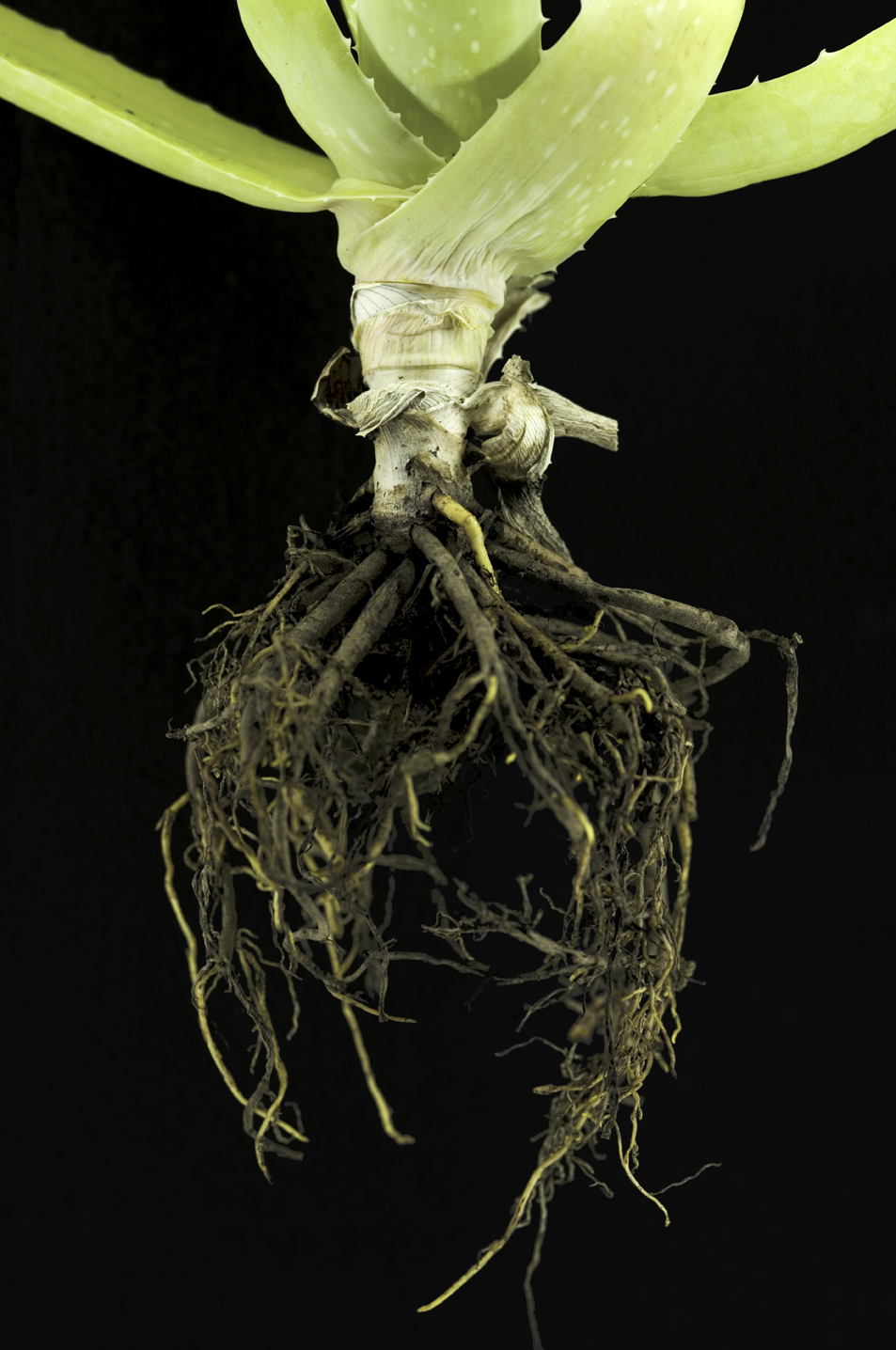
Root
A root of the Aloe plant. Within this root are the arbuscular mycorrhiza, which promote the plant's ability to collect water and nutrients from its surroundings.
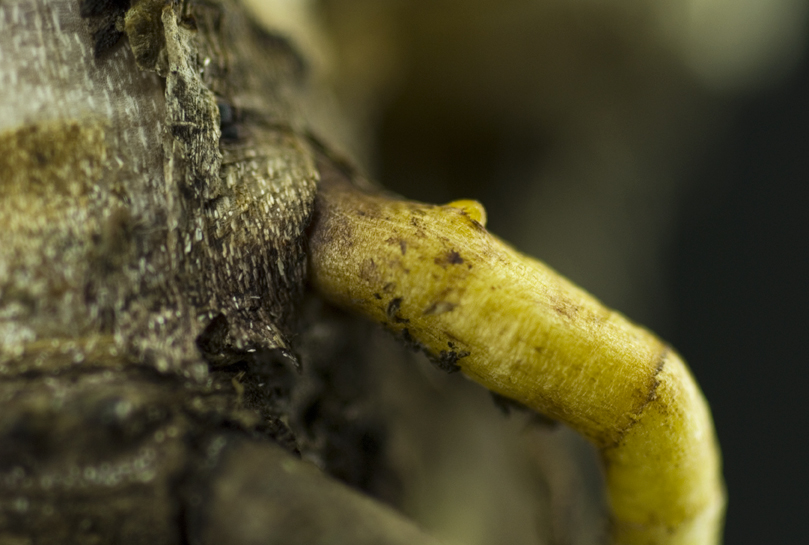
Leaves Crossing
